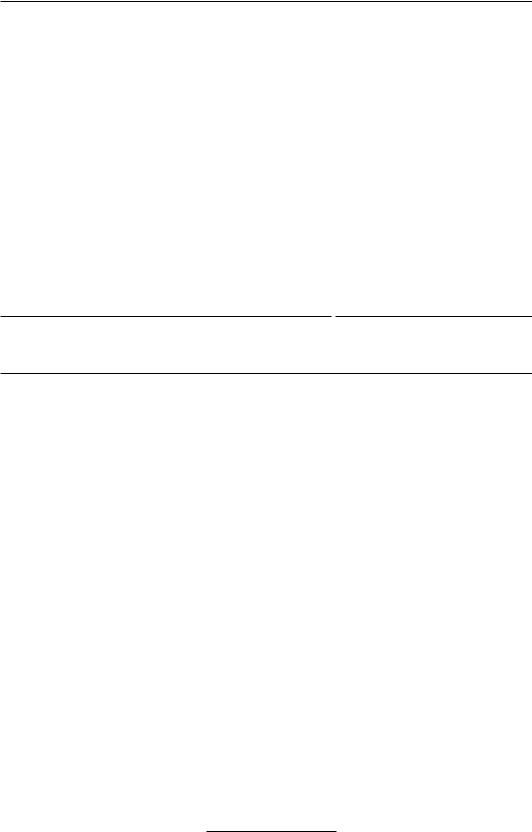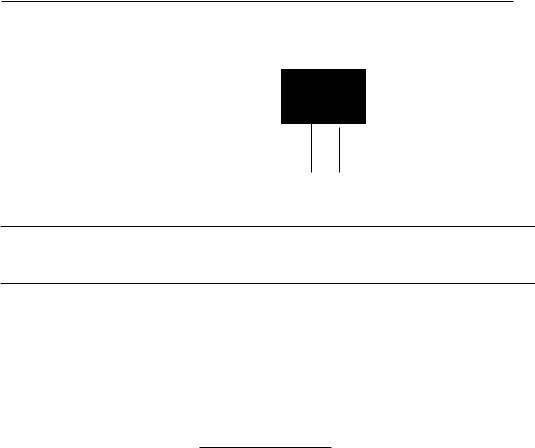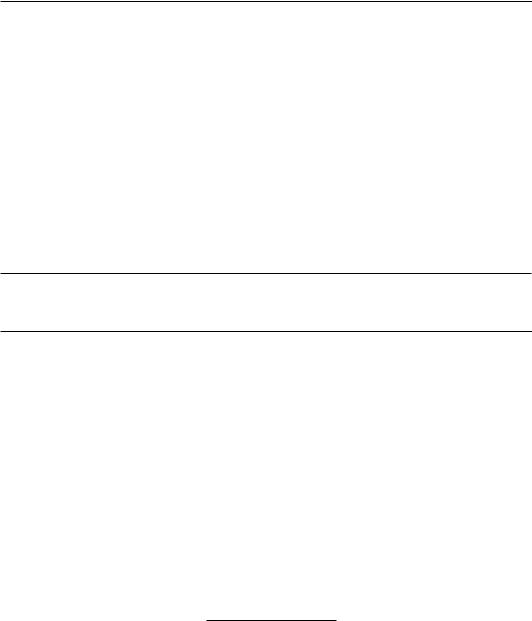
CFA Level 1 (2009) - 2
.pdf
The following is a review of the Economics principles designed to address the learning outcome s[;ltemenrs set forrh by CFA Institutc®. This topic is also covered in:
MONOPOLY
Study Session 5
EXAM Focus
Be able to identify rhe key fearures of a monopoly and how narural monopolies ame. Know rhe relarionship berween price. marginal revenue. average cosr. and marginal cosr for a monopoly and why monopolies resrricr ourpur ro an
economically inefficienr quanriry compared ro pure comperirion. Undersrand rhe social benefir of regularion imposing average cosr pricing and why marginal cosr pricing for a narural monopoly requires a subsidy.
--~--- -------
LOS 19.a: Describe the characteristic~ of;: monopoly. includint\ factor" that
allow a monopoly to arise, and monopoly price-setting straregies.
A monopoly is characrerized by one seller of a specific' well-defined producr rhar has 110 good subJtitutcs. For a firm to mainrain irs monopoly posirion it must be rhe case rhar
barriers to ('IItr)' to the mar/?et arc high.
Barriers to enrry arc facrars rhar make ir difficulr for compering firms to enrer a marker. There are rwo rypes of barriers to enrry rhar can resulr in a monopoly: legal barriers and narural barriers.
Legal Barriers
Most legal barriers to enrry do nor resulr in acrual monopolies. Resrricrions on broadcasr licenses for radio and relevision srarions granred by rhe Federal Communicarions Commission in rhe U.S. preselll significant barriers ro eorr)·. Wirhin each marker, however, several such licenses are granred, so no one srarion has a monopoly on radio
or relevision broadcasrs. Such resrricrions also offer an example of how marker power of firms prorecred from comperirion by legal resrricrions can erode over rime as subsrirute producrs are developed. The inrroducrion of cable relevision, sarellire relevision, and, mosr recently, sarellire radio have all significantly eroded rhe prorecrion offered by possessing a local broadcasr license.
Parenrs, copyrighrs, and government granted franchises are legal barriers ro enrry rhar can resulr in a single, monopoly, producer of a good in a marker. U.S. laws give rhe U.S.
Posral Sysrem rhe exclusive righr to deliver mail (although subsriture producrs have been inrroduced) and local laws gram exclusive righrs to warer, elecrric, and orher uriliries. Parents give their owners the exclusive righr ra produce a good for a period of years jusr as copyrighr prorecrion is offered to rhe crearors of original marerial. Pharmaceutical firms, semiconducror firms, and software crearors are a few of rhe rypes of firms rhar enjoy such prorecrion from comperirion.
©2008 Kaplan Schweser |
Page 91 |

Study Session 5
Cross-Reference to CFA Institute Assigned Reading #19 - Monopoly
Natural Barriers
In some industries, the economics of production lead to a single firm supplying the entire market demand for the product. When there are large economies ofscaLe, it means that the average cost of production decreases as a single firm produces greater and greater output. An example is an electric utility. The fixed costs of producing electricity and building the power lines and related equipment to deliver it to homes are quite high. The marginal cost of providing electricity to an additional home or of providing more electricity to a home is, however, quite low. The more electricity provided, the lower the average cost per kilowatt hour. When the average cost of production for a single firm
is falling throughout the relevant range of consumer demand, we say that the industr)' is a natural monopoly. The entry of another firm into the industry would divide the production between two firms and result in a higher average cost of production than for a single producer. Thus, large economies of scale in an industry present significant barriers to entr),.
A 1Il011OpO~l'facc., {/ dou'flu1tlrd ...Ioping dClfI,1iJd CUI"I't(or if.' product, so profit maximization invcJves a trade-off between price and quantity sold if the firm sells at the same price to all buyers. Assuming a single selling price, a monopoly firm must lower its price in order to sell a greater quantity. Unlike a firm in perfect competition, a firm facing a downward sloping demand curve must determine what price to charge, hoping to find the price and outFut combination that will bring the maximum profit to the firm.
Mor-opely Price-Setting Strategies
Two pricing strategies that are possible for a monopoly are singLe-pr,a and price discrimination. If the monopoly's customers cannot resell the product to each other, the monopoly can maximize profits by charging different prices to different groups of customers. When price discrimination isn't possible, the monopoly will charge a single price. Price discrimination is described in more detail later in this ropic.
LOS J 9.b: Explain the relation between price, marginal revenue, and elasticity for;] monopoly, ana determine a monopoly's profit-maximizing price and quantity
To maximize profit, monopolists will expand output until marginal revenue (MR) equals marginal cOSt (MC). Due to high entry barriers, monopolist profits do not attract new market entrants. Therefore, long-run positive economic profits can exist. Do monopolists charge the highest possible price? The answer is no, because monopolists want to maximize profits. not price.
Figure 1 shows the revenue-cost suucture facing the monopolist. Note that production will expand until MR = MC at optimal output Q*. To find the price at which it will sell Q* units you must go to the demand curve. The demand curve itself does not determine the optimal behavior of the monopolist. Just like the perfect competition model, the profit maximizing output for a monopolist is where MR = Me. To ensure a profit, the demand curve must lie above the firm's average total cost (ATC) curve at the optimal
Page 92 |
©2008 Kaplan Schweser |

Srudy Session 5
Cross-Reference to CFA Institute Assigned Reading #19 - Monopoly
quanrity so that price> ATC. The optimal quantity will be in the elastic range of the demand curve.
Figure 1: Monopolistic Short-Run Costs and Revenues
Price
ATC
D
MR
--~-Q-'----*~-~---- QU<1ntin'
Once again, the profif maximiziliK outrut for a monopolistic firm is the one for which l\lR = MC As shown in Figure 1, the proht maximizing oUtpUt is Qk, with a price of
ATC', x Q'.
I'v1onopolists are price searchers and have impe~fect information regarding market demand. Thn' mUSl experiment with different prices (0 find the one that maximizes rrofir.
LOS 19.c: Explain price discrimination, and win perrect price discrimination IS efficient.
Price discrimination is the practice of charging different consumers different prices for the same product or service. Examples are different prices for airline tickets based on whether a Saturday-night stay is involved (separates business travelers and leisure travelers) and different prices for movie tickets based on age.
The motivation for a monopolist is to capture more consumer surplus as economic profit than is possible by charging a single price.
For price discrimination to work, the seller must:
•Face a downward-sloping demand curve.
•Have at least two identifiable groups of customers with difftrent price eLasticities 0/ demand for the product.
•Be able ro prevent the customers paying the lower price from reselling the product to the customers paying the higher price.
As long as these condi tions are met, firm profits can be increased through price discrimination.
Figure 2 illustrates how price discrimination can increase the total quantity supplied and increase economic profits compared ro a single-price pricing strategy. For simplicity, we have assumed no fixed COSts and constant variable COStS so that MC = ATC. In panel (a), the single profit-maximizing price is $100 at a quantity of 80 (where MC = MR), which generates a profit of $2,400. In panel (b), the firm is able to separate consumers, charges
©2008 Kaplan Schweser |
Page 93 |

Srudy Session 5
CrossReference to CFA Institute Assigned Reading # 19 - Monopoly
one group $110 and sells them 50 units, and sells an addi tional 60 un its to another group (with more elastic demand) at a price of $90. Total profit is increased to $3,200, and t(Hal output is increased from 80 units to 110 units.
Compared to the quantity produced under perfect competition, the quantity produced by a monopolist reduces the sum of consumer and producer surplus by an amount represented by the triangle labeled deadweight loss in Figure 3. Consumer surplus is reduced not only by the decrease in quantity but also by the increase in price relative to perfect competition. Monopoly is considered inefficient because the reduction in output compared to perfect competition reduces the sum of consumer and producer surplus. Since marginal benefit is greater than marginal cost, less than the efficient quantity
of resources are allocated to the production of the good. Price discrimination reduces this inefficiency by increasing output toward the quantity where marginal benefit equals marginal cost. Note that the deadweight loss (DWL) is smaller in panel (b). The firm gains from those customers with inelastic demand while still providing goods to customers with more elastic demand. This m;1\' el'el1 causc produClion lO take plas'(' whcn it would not otherwise,
An extreme (~lnd brgeh' thcoretical) GISe or price discrimination is perfect price discrimination. If it were possible ror the monopolist to charge each consumer the: maximum they are willing to pay for each unit, there would be no deadweight Joss. since a monopolist would produce the same quantit:· as under perfect competition, With perrect price discrimination, there would bs' no consumel surplus, It would all hc' captured by the monopolist.
Figure 2: Effect of Price Discrimination on Output and Operating Profit
(a) \X-'jthollt price discrimination
Price
Profit = $2,400
100
70
L-_----- |
' |
Qll;JI1(1()' |
80
|
(b) With price discrimination |
Price |
|
|
Profit = $3,200 |
|
$2,000 |
110 |
$1,200 |
|
|
90 |
DWL |
70---+-~~----MC= ATC
,"'"---, .-.....
|
...... |
"'"----D |
L-----l_ |
----l__~ |
QU;ll1ti t)· |
50 |
110 ] 90 |
|
LOS 19.d: Explain how c.:onmmer and producer surplus are redistributed in ~ monopoly, including the occurrence of deadweight loss and rent seeking.
Figure 3 illustrates the difference in allocative efficiency berween monopoly and perfect competition. Under perfect competition, the industry supply curve, S, is the sum of the supply curves of the many competing firms in the industry. The perfect competition equilibrium price and quantity are at the intersection of the industry supply curve and the market demand curve, D. The quantity produced is Qpc at an equilibrium price
Ppe Since each firm is small relative to the industry, there is nothing to be gained by attempting to decrease output in an effort to increase price.
Page 94 |
©2008 Kaplan Schweser |

Scudy Session ')
Cross-Reference to CFA Institute Assigned Reading #19 - Monopoly
A monopolisr facing rhe same demand curve, and wirh rhe same marginal cosr curve,
Me, will maximize profit by producing Qlll0N (where MC '"MR) and charging a price
of PM UN'
The imporrant rhing ro nore here is rhat when compared (() a perfectly com peri rive indusrry, the monopoly firm will produce less (Oral ourpur and charge a higher price.
Recall from our review of perfect competirion rhar the efficient quantiry is rhe one for which rhe sum of consumer surplus and producer surplus is maximized. In Figure 3, rhis quantiry is where 5 = D, or equivalently, where marginal COSt (MC) = marginal benefit (MB). Monopoly creates a deadweight loss relative to perfecr competirion because
monopolies produce a quantity that does nor maximize rhe sum of consumer surplus and producer surplus. A furrher loss of efficiency results from rent seeking when producers spend time and resources (0 rry (0 acquire or establish a monopoly.
Figure 3: Perfecr Competition \'s. Monopoly
I':ie"
Consulller surplm
;j l l'~IO" and Q\I""
//
MR
D=MR
o -----~------'-----------Quantity
Q..10N Ore
LOS 19.e: Explain the potential gains from monopoly and the regulation of a natural monopoly.
Recall rhat a natural mOIJOpo~J' is an industry in which economies of scale are so pronounced thar the ATC of (Oral industry producrion is minimized when rhere is only one firm. Here, average (Otal COSt is declining over the entire range of relevant ourpurs. Fixeu cosrs are high and marginal cosrs are quire 1m\'. We illustrate rhe case of a natural monopoly in Figure 4. Lefr unregulated, a single-price monopolist "viII maximize profits by producing where MR = Me, producing quantity Qu and charging PL:' Given the economies of scale, having anorher firm in rhe market would increase rhe ATC
significantly. Nore in hgure 4 rhar if rwo firms each produced approximarely one-half of outpur ~c' average cosr for each firm would be much higher than for a single producer producing ~c Thus, rhere is a potential gain from monopoly because of lower average cosr producrion when LRAC is decreasing so rhat economies of scale lead (0 a single supplier.
©2008 Kaplan Schweser |
Page 95 |

Study Session 5
Cross-Reference to CFA Institute Assigned Reading #19 - Monopoly
Figure 4: Natural Monopoly-Average Cost and Marginal Cost Pricing
Price
Required Subsidy (with marginal cost pricing)
/
: MR |
|
o |
L - |
-'--...L.. |
Quanrity |
Economies of scope em also lead [(l J naturaJ monopoly, especially in an lIldustry v,·here economies of scale also exisL Economies of scope occur when a firm expands the range of goods it produces such that its average total coSt is reduced. A firm such as Boeing uses very specialized equipmenr and computer programs to engineer the many parts that go into an airplane. This means that it can produce these components at " lower average cOSt than individual suppliers could.
Regulators often attempt to increase competition and efficiency through eriorts to reduce artificial barriers to trade, such as licensing requiremenrs, quotas, and. tariffs.
Since monopolists produce less than the optimal quanrity (do not achieve efficient resource allocation), government regulation may be aimed at improving resource allocation by regulating the prices monopolies may charge. This may be done through average cost pricing or marginal cost pricing.
Average cost pricing is the most common form of regulation. This would result in a price of PAC and an output of ~c as illustrated in Figure 4. It forces monopolists to reduce price to where the firm's ATC intersects the market demand curve. This will:
•Increase output and decrease price.
•Increase social welfare (allocative efficiency).
•Ensure the monopolist a normal profit since price = ATe.
Marginal cost pricing, which is also referred to as efficient regulation, forces the monopolist to reduce price to the point where the firm's MC curve intersects the market demand curve, which increases output and reduces price but causes the monopolist to incur a loss since price is below ATe, as illustrated in Figure 4. Such a solution requires a government subsidy in order to provide the firm with a normal profit and prevent it from leaving the market entirely.
Page 96 |
©2008 Kaplan Schweser |

Study Session 5
Cross-Reference to CFA Institute Assigned Reading #19 - Monopoly
Regulators sometimes go astray when dealing with the problems associated with markets with high barriers to entry. The reasons for this include:
•Lack ofinformation. Regulators may not know the firm's ATC, MC, or demand schedule.
•Cost shifting. The firm has no incentive to reduce costs, since this will cause the
regulators to reduce price. If the firm allows costs to rise, the regulator will allow |
|
. |
. |
pflces to Increase.
•Quality regulations. It is easier to regulate price than it is to regulate quality. If the
firm faces falling profits due to a cost squeeze, it may reduce the quality of the good or servICe.
•Special interest effect. The firm may try to influence regulation by political manipulation designed to influence the composition and decisions of the regulatory board.
©2008 Kaplan Schweser |
Page 97 |

Study Session 5
Cross-Reference to CFA Institute Assigned Reading # 19 - Monopoly
KEy CONCEPTS
LOS J9.a
Monopoly is characterized by one seller of a specific, well-defined product that has no good substitutes and high barriers to entry. Barriers to entry include economies of scale. government licensing and legal barriers, patents or exclusive rights of production, and resource con trol.
Monopoly price-setting strategies include charging a single profit-maximizing price and price discrimination, where different prices are charged to different groups of customers.
LOS 19.b
Like aJJ firms, monopolists maximize profits by producing the qu<mtity where marginal reven ue eq lIals m,Hgi nal cost.
i\!onopollsts ;Irt' l'riLt' \c-;1rLhnl ((ac'c' dC)\\'n\\"artl slopin s dem.lnd cur\c,J <Inti !1;I\t imperfect information about demand. so the\" must experiment \\Idl difTcrelH pri,es (search) to fi nd the profi t maxi mizi ng price/q UJnti t}·. This priceltJ uan ti ty will alwavs be in the elastic range of the demand curve for the firm's product.
Price discrimination can increase both output anc! monopoly prohts on I} if there arc at least two identifiable groups of customers with different price elas(IcJties of demand. and the monopolist can prevenr lower-price-paying customers from reselling to higher-price- pa\'! ng customers.
If a monopolist were able to charge the maximum price each consumer would pa}' (perfect price discrimination), the output quanrity would be efficient since output is at the level where marginal social benefit equals marginal social cost, but all consumer surplus would be captured by the monopolist.
Compared to perfect competition, monopolists rlut are unable to practice perfect price discrimination produce less than the efficient level of ourput. While this results in a deadweight loss to society, producer surplus is greater since the monopolist is able to capture more of what would be consumer surplllS under perfect competition. Monopolists arc willing to devote resources to achieving and mailltaining a monopoly and capture economic profit (monopoly rents) and this is termed rent seeking.
Page 98 |
©2008 Kaplan Schweser |

Study Session 5
Cross-Reference to CFA Institute Assigned Reading # 19 - Monopoly
LOS 19.e
A natural monopoly exists when economies of scale are so pronounced that average total COSt is falling (MC < ATC) over the entire relevant output range so that the cost of total industry produCtion is minimized when there is only one firm in the industry.
Regulation of a natural monopoly can take the form of average cost pricing or marginal cost PflCll1g.
With average cost pricing, the most common form of regulation, regulators require a natural monopoly to charge a price equal to average total cost where the market demand curve in tersects the average total cost curve.
•Marginal cost pricing (efficient regulation) forces a monopolist to charge a price equal to marginal cost, where the firm's marginal cost curve intersects the marker demand curve. This increases outpur and reduces price bur requires a governmenr subsidy since price (marginal cost) is then less than average total cost.
©2008 Kaplan Schweser |
Page 99 |

Study Session 5
Cross-Reference to CPA Institute Assigned Reading #19 - Monopoly
CONCEPT CHECKERS
1.A monopolist will expand production until MR = MC and charge a price determined by the:
A.demand curve.
B.marginal cost curve.
C.average total cost curve.
2.Which one of the following statemenrs most accurately describes a significant difference between a monopoly firm and a perfectly competitive firm? A perfectly competitive firm:
A.minimizes costS; a monopolistic firm maximizes profit.
B.maximizes profit; a monopolistic firm maximizes price.
e.takes price as given; a monopolistic firm must search for the best price.
3.A natura! monopoly may exist when:
A.ATe increases as output incr:::ases.
B.economies of scale are great.
e.all production is divided up between just a few firms.
4.A monopolist will maximize profits by producing at the OUtput level where:
A.price is equal to Me.
B.MR equals ATC and charging a price along the demand curve dut corresponds to the output rate.
e.MR equals MC and charging :J price on the demand curve that corresponds to the output rate.
5.For effective price discrimination to occur, the seller must:
A.face a downward-sloping demand curve.
B.have a large advertising budget relative to sales.
e.be able to ensure resale of the product among customers.
6.A monopoly situation in which the ATC of production steadily declines with increased output is called a:
A.natural monopoly.
B.structural monopoly.
e. declining cost monopoly.
7.When a regulatory agency requires a monopolist to use average cost pricing, the intent is to price the product where the:
A.MR curve inrersects the demand curve.
B.ATC curve inrersects the MR curve.
C. ATC curve inrersects the market demand curve.
Page 100 |
©2008 Kaplan Schweser |
